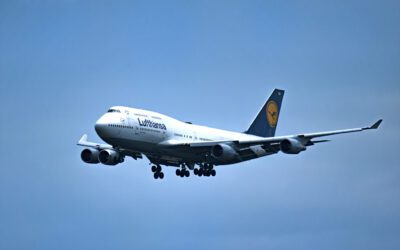Last week, the headline read, “JetBlue turbulence puts 24 in hospital.” Fortunately, incidents of severe air turbulence aren’t common. Unfortunately, despite its rarity, passengers and flight crew members have sustained serious injuries from severe turbulence. Seventeen people have died from injuries due to severe air turbulence worldwide since 1980, three on U.S. flights, according to AirSafe.com.
From 2005 through 2015, the FAA reports 231 passengers and 177 crew members were injured due to severe air turbulence. During that time, millions of passengers flew on U.S. flights.
I’ve written about the problems of severe air turbulence in the past, including after its occurrence on an American Airlines flight flying from Seoul, South Korea, to Dallas-Fort Worth International last year. Fourteen of the 255 passengers on board that flight were injured, some of whom had to be sent to hospitals.
What is particularly troubling about the JetBlue Airways incident in which so many were injured was that the passengers were warned to return to their seats and buckle up before the turbulence became severe.
Dr. Alan Lee, an orthopedic surgeon on the flight, said,
“It was made very clear by the pilot and flight attendants that we should be seated and buckled in.”
Any time airplane passengers are seated, without exception, they should have their seat belts buckled up.
A major reason for this is CAT, “clear-air turbulence,” the turbulent movement of air masses in the absence of any visual clues. Some people refer to CAT as “air pockets.” It can occur without any warning whatsoever.
In the case of the JetBlue flight 429 — an Airbus 320 — there was a warning, yet 22 passengers were either not in their seats, or if in their seats, not buckled-up. Derek Lindahl, a passenger on the flight, said that a woman sitting in front of him flew two feet in the air because she wasn’t wearing a seatbelt.
Severe air turbulence can cause passengers to fly upward, crashing their heads or tossed about anywhere in the cabin, causing head wounds and concussions, general lacerations and even broken bones, but passengers being thrown around the cabin isn’t the only thing which can cause serious passenger injuries during severe turbulence.
If overhead bin doors are left open, carry-ons and loose items can fly through the plane’s cabin, hitting passengers. A laptop smashing into someone’s head can cause a grave injury. Severe turbulence can launch belongings left loose on the floor of the airplane cabin. Hot beverages on tray tables and those being held or served can be spilled, scalding those on board.
Passengers can help themselves to prevent injury during times of severe air turbulence on their flights. “Preparation” must be the watchword of every air traveler.
• Fasten your seatbelt — Whenever seated, all air travelers should keep their seatbelts snuggly fastened throughout their flights, whether the seatbelt sign is on or not.
Seatbelts don’t have to be so tight that they’re uncomfortable. They can be loose enough to permit each traveler to shift seat positions, but they must be snug enough to prevent passengers being thrown out of their seats in severe turbulence. Even if passengers are lying down in a lie-flat seat to sleep through the night, they must wear their seatbelts tightened enough to keep them safe.
If passengers are flying with children, in my opinion, the children should never fly seated in their parent’s lap. Parents aren’t strong enough to hold their children in their lap, even babies, if sudden 2–2½ g-force turbulence hits their flight. Parents should belt them in an approved child safety seat, appropriate for their age and size, strapped to their own separate seat on the plane.
• Stow gear not in use — Gear such as games, tablets, cameras, music players and laptop computers can become projectiles if a flight encounters severe air turbulence. Stow all gear when not in use. Put them in the seatback pocket or in one’s carry-on or personal item. Each traveler’s personal item on their plane’s floor needs to be pushed under the seat in front of them to prevent them from flying around in severe turbulence.
• Keep overhead bin doors closed at all times — After retrieving belongings from bags stowed in an overhead bin, airplane passengers must close the bin’s door and make sure it’s latched. If a passenger forgets to close the bin’s door, other passengers should ask that person to go back and close it, or do it themselves. Closed overhead bin doors prevent bags and gear stowed there from falling or flying around the cabin, if severe air turbulence hits the plane.
• Follow flight crew instructions — Listen to flight crew directives and follow them. If the seatbelt sign is lighted during your flight, stay in your seat, or if up, immediately return to your seat. Whenever seated, buckle-up.
As an air traveler, while you might not ever encounter severe air turbulence in your lifetime, it’s always a possibility. Don’t be your own worst enemy when you fly. “Prepare” for the worst and hope severe turbulence never hits your flights. Follow the suggestions above to stay as safe as possible while aloft. It’s unfortunate, but likely, that if more passengers on JetBlue flight 429 had heeded the flight crew’s warning and instructions, far fewer would have been injured.
(Image: Turbulence in American Airlines A333, Envoy Class (Business Class) Cabin – Copyright © 2015 NSL Photography. All Rights Reserved.)
After many years working in corporate America as a chemical engineer, executive and eventually CFO of a multinational manufacturer, Ned founded a tech consulting company and later restarted NSL Photography, his photography business. Before entering the corporate world, Ned worked as a Public Health Engineer for the Philadelphia Department of Public Health. As a well known corporate, travel and wildlife photographer, Ned travels the world writing about travel and photography, as well as running photography workshops, seminars and photowalks. Visit Ned’s Photography Blog and Galleries.




